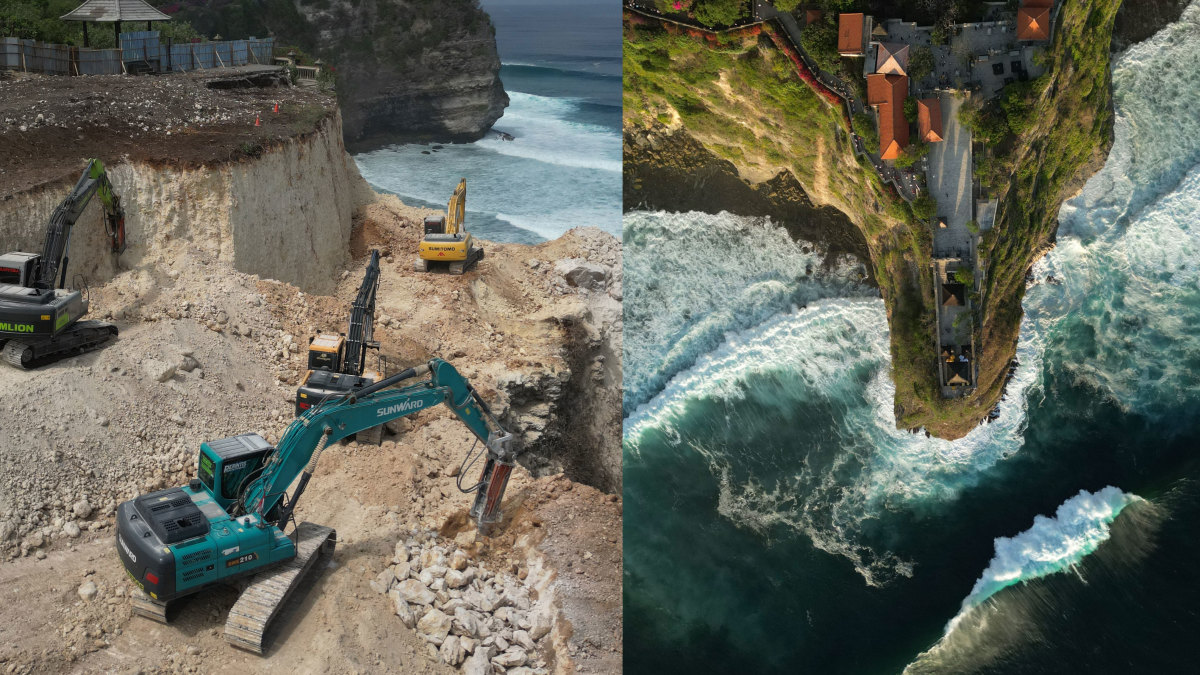Construction of a coastal road above Bali’s iconic surf break Uluwatu continues unabated. New drone footage shows the magnitude of the development as construction equipment can be seen carving out the cliff and launching large boulders into the ocean. Outcry over the operation has been growing as the scope of the project has come into clearer focus, and now surfing environmental organization Save The Waves is sounding the alarm.
The construction, which is being funded by the Badung Regency government, is intended to shore up the area around the ancient Pura Luhur Uluwatu Temple. A sacred Hindu temple with deep spiritual importance to the Balinese people, it’s a complicated and delicate situation. That being said, the environmental impact to the delicate marine ecosystem of the area is of great concern.
“The reefs surrounding Uluwatu are known not only for generating world-class waves but also for supporting an incredible array of marine life, including dugongs (relatives of manatees), sea snakes, reef sharks, sea turtles, and numerous species of reef fish. The area’s biodiversity is so remarkable that even orcas have been spotted near the break. Any disruption to this ecosystem could have serious and lasting consequences,” shares a new Save The Waves press statement.

Save The Waves
The organization reports that surfers and surf tourism contribute an upwards of $35 million to the local economy, making it a vital revenue driver for the area. Annually over 235,000 surfers reportedly visit the area. This puts the value of a surf spot squarely in the crosshairs of how these precious natural resources should be treated. Understanding that ensuring the safety of the Pura Luhur Uluwatu Temple is paramount, the economic importance of a wave like Ulu’s can’t be understated either.
“It is concerning that this project is moving forward without transparency regarding the risks to both the environment and the surf,” continues the Save The Wave statement. “In a location as sensitive and globally significant as Uluwatu, an Environmental Impact Assessment—locally known as AMDAL—must be completed and made publicly available. Only then can we fully understand the project’s environmental implications and ensure the protection of both the temple and the ecosystem.”
In 1972, 15-year-old Australian Steve Cooney captured on filming surfing Uluwatu, ostensibly for the first time. The moment was celebrated in Alby Falzon’s groundbreaking “Morning of the Earth.” The rest, as they say is history. Unfortunately, the future doesn’t look quite as bright.
Related: Construction of Concrete Seawall Has Begun at Uluwatu Cliffs
Related: Ocean Conservationist Paul Watson Arrested, Facing Extradition to Japan

